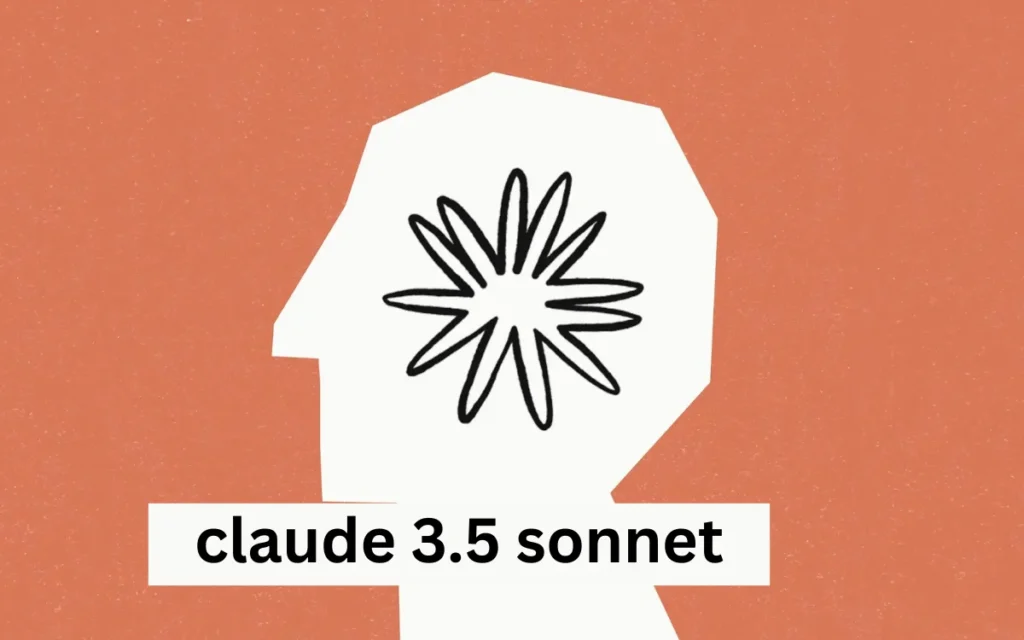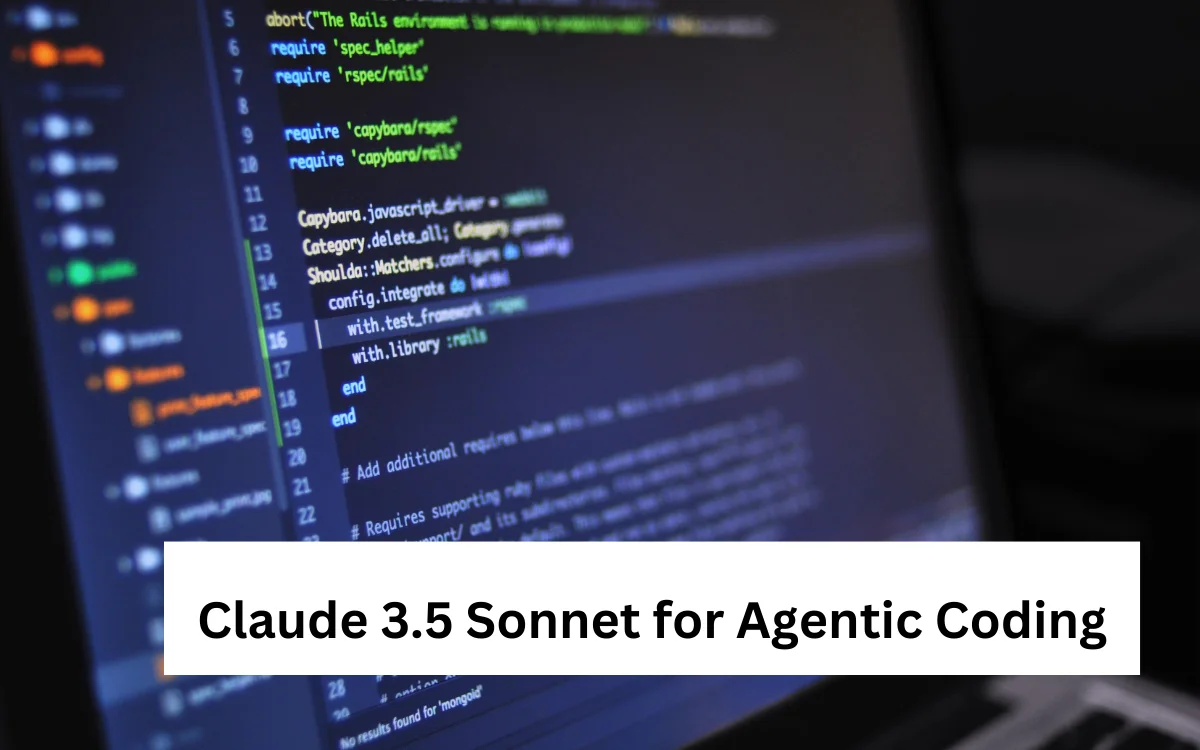Claude 3.5 Sonnet for Agentic Coding.In the rapidly evolving landscape of artificial intelligence and software development, Claude 3.5 Sonnet has emerged as a game-changing tool for agentic coding. This advanced AI model, developed by Anthropic, is reshaping the way developers approach coding tasks, offering unprecedented levels of assistance and automation. In this comprehensive article, we’ll explore the capabilities of Claude 3.5 Sonnet in the context of agentic coding, its impact on the software development industry, and the potential future of AI-assisted programming.
Understanding Agentic Coding
What is Agentic Coding?
Agentic coding refers to the use of AI agents or models that can autonomously perform coding tasks or assist human developers in writing, debugging, and optimizing code. These AI agents act with a degree of independence, understanding context, and making decisions based on their training and the specific requirements of a coding task.
The Evolution of AI in Coding
- Early code completion tools
- Rule-based code generation systems
- Machine learning-based code suggestion engines
- Advanced language models for code understanding and generation
Key Benefits of Agentic Coding
- Increased productivity and efficiency
- Reduced errors and improved code quality
- Faster prototyping and development cycles
- Assistance with complex algorithms and data structures
- Continuous learning and adaptation to new programming paradigms
Introducing Claude 3.5 Sonnet
Overview of Claude 3.5 Sonnet
Claude 3.5 Sonnet is an advanced language model developed by Anthropic, designed to excel in a wide range of natural language processing tasks, including code generation and understanding. As part of the Claude 3 family, it represents a significant leap forward in AI capabilities for software development.
Key Features of Claude 3.5 Sonnet for Coding
- Multi-language support: Proficiency in various programming languages
- Context-aware code generation: Understanding of project structure and coding conventions
- Natural language to code translation: Ability to convert human instructions into functional code
- Code explanation and documentation: Generating clear explanations and documentation for existing code
- Bug detection and correction: Identifying and suggesting fixes for common coding errors
- Performance optimization: Suggesting improvements for code efficiency
How Claude 3.5 Sonnet Enables Agentic Coding
Natural Language Understanding
Claude 3.5 Sonnet’s advanced natural language processing capabilities allow it to understand complex coding requirements expressed in human language. This enables developers to describe their needs in plain English, which the AI can then translate into functional code.
Contextual Code Generation
The model’s ability to maintain context over long conversations allows it to generate code that fits seamlessly into existing projects. It can understand the overall structure of a codebase and generate new components that adhere to established patterns and conventions.
Intelligent Code Completion
Beyond simple autocomplete functions, Claude 3.5 Sonnet can suggest entire code blocks or functions based on the current context and coding patterns. This intelligent completion can significantly speed up the coding process and reduce errors.
Code Refactoring and Optimization
Claude 3.5 Sonnet can analyze existing code and suggest refactoring options to improve readability, efficiency, or adherence to best practices. It can also identify potential optimizations to enhance performance.
Automated Testing and Debugging
The AI can generate test cases, identify potential edge cases, and even suggest fixes for bugs. This capability streamlines the testing and debugging process, leading to more robust and reliable software.
Practical Applications of Claude 3.5 Sonnet in Agentic Coding
Rapid Prototyping
- Quickly generate functional prototypes from high-level descriptions
- Iterate on designs with natural language instructions
- Explore multiple implementation options in a short time frame
Code Migration and Modernization
- Assist in porting code between different programming languages
- Update legacy code to modern standards and frameworks
- Identify and resolve compatibility issues during migration
API Integration
- Generate boilerplate code for API interactions
- Understand and implement complex API documentation
- Suggest best practices for secure and efficient API usage
Algorithm Implementation
- Translate high-level algorithm descriptions into efficient code
- Optimize existing algorithms for better performance
- Suggest alternative algorithmic approaches for specific problems
Custom Framework Development
- Assist in designing and implementing project-specific frameworks
- Generate consistent boilerplate code across large projects
- Ensure adherence to architectural patterns and design principles
The Impact of Claude 3.5 Sonnet on Software Development Workflows
Streamlined Code Review Process
- Automated pre-review checks for code style and quality
- Intelligent suggestions for code improvements
- Facilitation of discussions around complex code changes
Enhanced Collaboration
- Natural language interfaces for non-technical stakeholders
- Improved code documentation and explanation
- Assistance in merging and resolving conflicts in version control systems
Accelerated Learning for Junior Developers
- Interactive coding tutorials and explanations
- Personalized suggestions for improvement
- On-demand assistance with unfamiliar concepts or libraries
Improved Code Maintenance
- Automated updates for deprecated libraries or syntax
- Intelligent refactoring suggestions for evolving codebases
- Assistance in understanding and modifying legacy code
Challenges and Considerations
Ethical Use of AI in Coding
- Ensuring transparency in AI-generated code
- Addressing potential biases in AI coding assistance
- Maintaining human oversight and responsibility
Integration with Existing Development Tools
- Compatibility with popular IDEs and code editors
- Seamless integration with version control systems
- Interoperability with existing code analysis tools
Security and Intellectual Property Concerns
- Protecting sensitive code and data during AI interactions
- Ensuring compliance with licensing and copyright regulations
- Mitigating risks of AI-generated vulnerabilities
Balancing AI Assistance and Human Creativity
- Encouraging innovative problem-solving alongside AI support
- Avoiding over-reliance on AI-generated solutions
- Fostering a symbiotic relationship between human developers and AI tools

Best Practices for Leveraging Claude 3.5 Sonnet in Agentic Coding
Effective Prompt Engineering
- Crafting clear and specific coding instructions
- Providing necessary context for accurate code generation
- Iteratively refining prompts for optimal results
Combining Human Expertise with AI Capabilities
- Using AI as a collaborative tool rather than a replacement
- Critically evaluating and validating AI-generated code
- Leveraging AI for time-consuming tasks to focus on high-level design
Continuous Learning and Adaptation
- Staying updated on Claude 3.5 Sonnet’s evolving capabilities
- Experimenting with different use cases and coding scenarios
- Sharing best practices and insights within development teams
Establishing Guidelines for AI Usage
- Developing team-specific protocols for AI-assisted coding
- Setting standards for code review of AI-generated components
- Creating documentation practices for AI-human collaboration
Case Studies: Claude 3.5 Sonnet in Action
Startup Accelerator: Rapid MVP Development
A tech startup used Claude 3.5 Sonnet to quickly develop a minimum viable product (MVP) for their innovative app idea. The AI assisted in generating boilerplate code, implementing core features, and even suggesting optimal database schemas. This accelerated their development process, allowing them to present a functional prototype to investors in record time.
Enterprise Migration: Legacy System Modernization
A large corporation employed Claude 3.5 Sonnet to assist in modernizing their legacy COBOL systems to a Java-based architecture. The AI helped in translating core business logic, identifying potential issues in the migration process, and suggesting modern design patterns to improve the system’s scalability and maintainability.
Open Source Project: Enhancing Documentation
An open-source project utilized Claude 3.5 Sonnet to improve their documentation. The AI analyzed the existing codebase, generated comprehensive API documentation, and even created interactive tutorials for new contributors. This significantly lowered the barrier to entry for new developers and improved the project’s overall quality.
The Future of Agentic Coding with Claude 3.5 Sonnet
Advancements in Natural Language Understanding
As Claude 3.5 Sonnet and similar models continue to evolve, we can expect even more nuanced understanding of coding requirements expressed in natural language. This could lead to a future where complex software systems can be designed and implemented through conversational interfaces.
Integration with Visual Programming Tools
The combination of Claude 3.5 Sonnet’s natural language processing with visual programming interfaces could revolutionize software development. Developers might soon be able to create intricate systems by manipulating visual elements and providing voice or text instructions.
Automated Code Optimization and Refactoring
Future iterations of Claude 3.5 Sonnet may offer more advanced capabilities in automatically optimizing entire codebases. This could include suggesting architectural improvements, identifying and resolving performance bottlenecks, and even predicting future maintenance issues.
Personalized Coding Assistance
As the AI becomes more adept at understanding individual coding styles and preferences, we may see highly personalized coding assistants that adapt to each developer’s unique approach and help them improve their skills over time.
Cross-Domain Knowledge Integration
Future versions of Claude 3.5 Sonnet might integrate knowledge from various domains, allowing for more intelligent code generation that considers factors like business logic, user experience design, and industry-specific regulations.
Comparative Analysis: Claude 3.5 Sonnet vs. Other Coding Assistants
Claude 3.5 Sonnet vs. GitHub Copilot
- Language understanding: Claude 3.5 Sonnet may offer more nuanced understanding of natural language instructions.
- Contextual awareness: Both tools excel in understanding project context, but Claude 3.5 Sonnet might have an edge in maintaining context over longer interactions.
- Ethical considerations: Claude 3.5 Sonnet’s development focuses heavily on ethical AI, potentially offering more transparent and controllable assistance.
Claude 3.5 Sonnet vs. Traditional IDEs
- Code generation: Claude 3.5 Sonnet offers more advanced and context-aware code generation compared to traditional IDE features.
- Natural language interaction: Unlike most IDEs, Claude 3.5 Sonnet allows for coding assistance through natural language queries.
- Learning curve: Traditional IDEs may require less adaptation for experienced developers, while Claude 3.5 Sonnet introduces a new paradigm of interaction.
Claude 3.5 Sonnet vs. Specialized Coding Tools
- Versatility: Claude 3.5 Sonnet offers a broader range of assistance across multiple languages and tasks compared to specialized tools.
- Depth of expertise: Specialized tools might offer more in-depth assistance for specific languages or frameworks.
- Integration: Specialized tools are often better integrated with existing workflows, while Claude 3.5 Sonnet may require additional setup.
Implementing Claude 3.5 Sonnet in Your Development Workflow
Assessing Your Team’s Needs
- Identify pain points in your current development process
- Determine specific areas where AI assistance could be most beneficial
- Consider the learning curve and potential impact on team dynamics
Integration Strategies
- Start with small, non-critical projects to familiarize the team with the AI
- Gradually incorporate Claude 3.5 Sonnet into more complex tasks
- Develop clear guidelines for when and how to use AI assistance
Training and Onboarding
- Provide comprehensive training on effective prompt engineering
- Encourage experimentation and sharing of best practices
- Establish mentorship programs pairing AI-proficient developers with newcomers
Measuring Impact and ROI
- Set clear metrics for productivity, code quality, and developer satisfaction
- Regularly review and analyze the impact of AI assistance on these metrics
- Gather feedback from team members and iterate on the implementation strategy
Conclusion
Claude 3.5 Sonnet represents a significant leap forward in the field of agentic coding, offering developers powerful AI-assisted tools to streamline their workflow, improve code quality, and tackle complex programming challenges. As we’ve explored in this article, the potential applications of this technology are vast, ranging from rapid prototyping to legacy system modernization and beyond.
While the integration of AI into the software development process brings numerous benefits, it also presents challenges that must be carefully navigated. Ethical considerations, security concerns, and the need to balance AI assistance with human creativity are all crucial factors to consider when implementing Claude 3.5 Sonnet or similar tools in a development workflow.
Looking to the future, we can expect continued advancements in AI-assisted coding, with models like Claude 3.5 Sonnet becoming increasingly sophisticated in their understanding of both natural language and programming concepts. This evolution promises to further transform the landscape of software development, potentially leading to new paradigms in how we design, implement, and maintain complex software systems.
As with any transformative technology, the key to success lies in thoughtful implementation, continuous learning, and a willingness to adapt. By embracing the capabilities of Claude 3.5 Sonnet while maintaining a critical eye on its limitations and ethical implications, developers and organizations can harness the power of AI to drive innovation, improve efficiency, and create better software solutions for the challenges of tomorrow.

FAQs
What is agentic coding?
Agentic coding involves creating autonomous software agents that can perform tasks, make decisions, and interact with other systems without continuous human intervention.
Can Claude 3.5 Sonnet help with agentic coding?
Yes, Claude 3.5 Sonnet can assist in writing code, providing algorithms, and generating logic for autonomous agents.
What programming languages does Claude 3.5 Sonnet support?
Claude 3.5 Sonnet can generate and understand code in various languages, including Python, JavaScript, Java, C++, and more.
Can Claude 3.5 Sonnet create complete agentic systems?
While it can help design and write code for agentic systems, human oversight is needed for integration, testing, and deployment.
How does Claude 3.5 Sonnet assist in agentic coding?
Claude 3.5 Sonnet can generate code snippets, suggest algorithms, debug code, and provide explanations of complex concepts.
How can Claude 3.5 Sonnet help with decision-making algorithms?
Claude 3.5 Sonnet can provide algorithms for decision trees, neural networks, reinforcement learning, and other decision-making processes.
